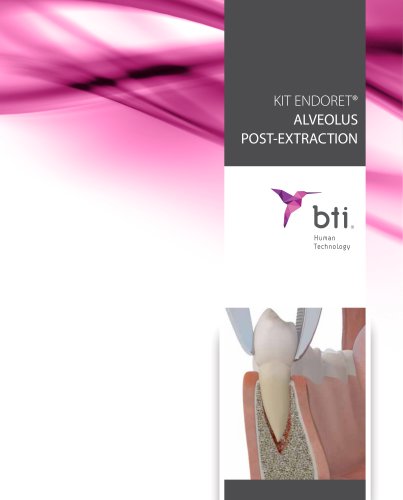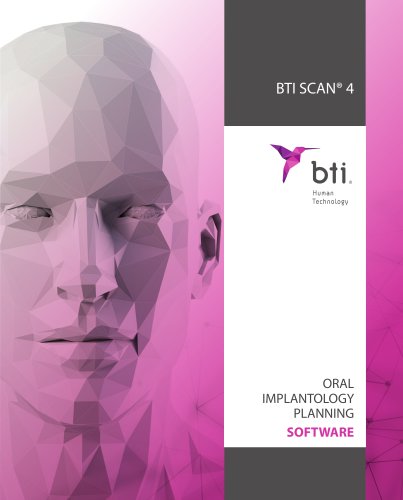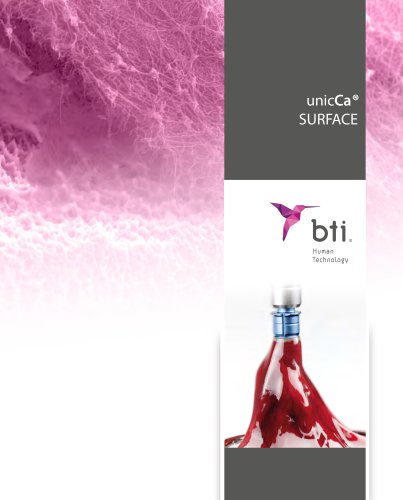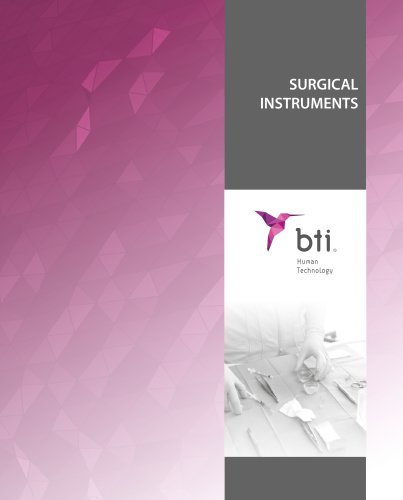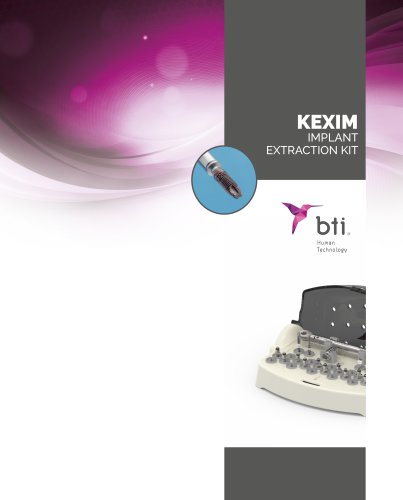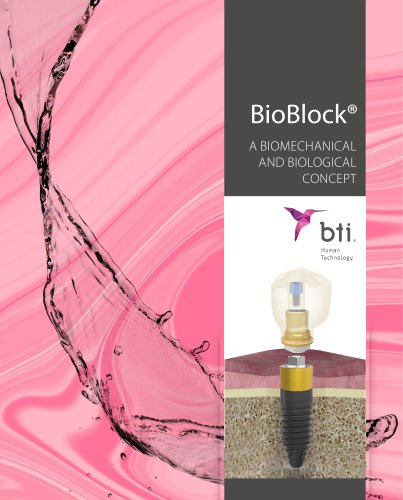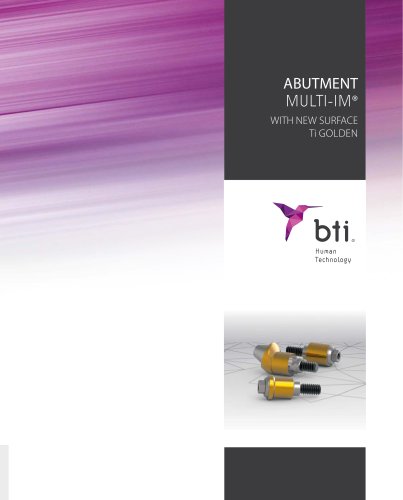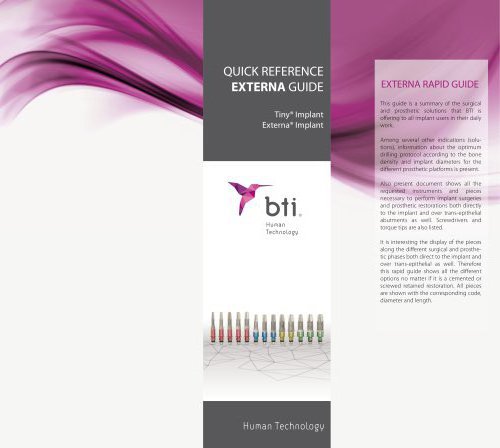 Website:
BTI Biotechnology Institute
Website:
BTI Biotechnology Institute
Catalog excerpts

BTI SOLUTIONS FOR ATROPHIC MAXILLAE
Open the catalog to page 1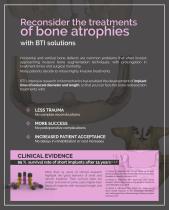
of bone atrophies with BTI solutions Horizontal and vertical bone defects are common problems that often involve approaching invasive bone augmentation techniques, with prolongation in treatment times and surgical morbidity. Many patients decide to refuse highly invasive treatments. BTI’s intensive research in biomechanics has enabled the development of implant lines of reduced diameter and length, so that you can face the bone reabsorption treatments with: LESS TRAUMA MORE SUCCESS INCREASED PATIENT ACCEPTANCE No delays in rehabilitation or cost increases CLINICAL EVIDENCE 95 % survival...
Open the catalog to page 2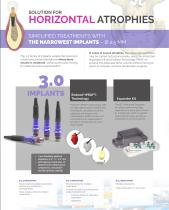
HORIZONTAL ATROPHIES SIMPLIFIED TREATMENTS WITH THE NARROWEST IMPLANTS – Ø 2.5 MM The 3.0 family of implants enable the treatment of total and partial edentulisms where bone volume is moderate, without previously having to undertake bone augmentation. In cases of severe atrophies, the expansion technique may be carried out less invasively, using the motorized expanders kit and Endoret Technology (PRGF) to achieve the adequate bone volume without having to resort to complex and less predictable surgeries. Endoret®(PRGF®) Technology Endoret® (PRGF®) technology with its high regenerative...
Open the catalog to page 3
VERTICAL ATROPHIES SIMPLIFIED TREATMENTS WITH THE SHORTEST IMPLANTS – L: 4.5 MM Short implants enable the treatment of edentulisms with moderate atrophies in one surgical step: • With no maxillary sinus lifts With no risks in lower jaw because of the proximity to the dentary nerve For the severe atrophies, the front cutting drill and Endoret® (PRGF®) allow to simplify the surgical approach of the lower jaw and maxillary sinus (vertical bone growth technique, trans-alveolar sinus lift). SHORT IMPLANTS Endoret®(PRGF®) Technology Endoret® (PRGF®), technology with its high regenerative...
Open the catalog to page 4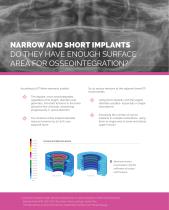
NARROW AND SHORT IMPLANTS DO THEY HAVE ENOUGH SURFACE AREA FOR OSSEOINTEGRATION? According to BTI finite elements studies1: So, to reduce tensions to the adjacent bone BTI recommends: The implant, once osseointegrated, regardless of its length, diameter and geometry, transmits tensions to the bone along the first 3 threads, decreasing progressively in apical direction. Using short implants with the largest diameter possible (especially in single restorations). Increasing the number of narrow implants in multiple restorations, using them as single only in lower and lateral upper incisors....
Open the catalog to page 5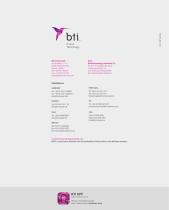
B.T.I. Biotechnology Institute S.L. Parque Tecnológico de Álava Leonardo da Vinci ,14 01510 Miñano (Álava) SPAIN bti.implantes@bti-implant.es Subsidiaries GERMANY www.bti-biotechnologyinstitute.com NOTE: consult your distributor for the availability of the product in the different markets. NEW PRODUCTS iPhone / smartphone version iPad / Tablets version (Customer
Open the catalog to page 6All BTI Biotechnology Institute catalogs and technical brochures
-
BTI Root Extractor
4 Pages
-
BTI UniCca® Surface
5 Pages
-
BTI Surgical Instruments
48 Pages
-
BTI Front Cutting Drill
6 Pages
-
KEXIM Implant Extraction Kit
4 Pages
-
ABUTMENT MULTI-IM
6 Pages
Archived catalogs
-
CAD/CAM DISC Blank
2 Pages




